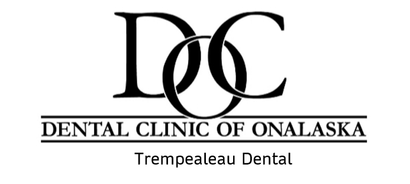Dental Clinic of Onalaska - (608) 783-3341 |Trempealeau Dental - (608) 534-6195
Call Us Now: Dental Clinic of Onalaska - (608) 783-3341 | Trempealeau Dental - (608) 534-6195
Comprehensive Dental Services in Onalaska
With our longstanding history within the community, our staff is well-versed in many situations when it comes to dental treatment. Our offices offer a wide range of services that you can't find just anywhere. View our services below to learn more about what we offer.
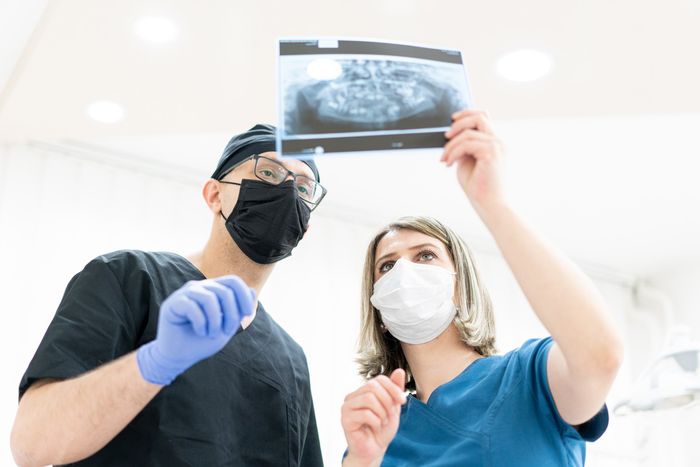
Bonding
Bonding involves adhering composite resin material that is matched to the color of the tooth, and to the front of the tooth. This is done to repair the damage done to the tooth by decay, to alter the alignment of the tooth, close gaps between the teeth, or for cosmetic purposes. First, the surface of the tooth is roughened to accept the bonding and hold it. A gel is applied to micro-etch the tooth surface, and a primer/bond agent is applied, so the material adheres to the surface. Then the material itself is placed on the tooth and hardened with intense light. The composite resin material is shaped and polished to get a lustrous finish as a last step.
Sealants
Sealants are used to fill in narrow grooves in a tooth that cannot be adequately cleaned by brushing. In some cases, the tooth structure has fine grooves or pits which accumulate plaque, not because the person doesn't brush, but because they're too narrow to allow even one bristle into them. These will develop cavities over time, and you don't want that. So the dentist will brush on a coating that seals the grooves and pits, making it possible to brush off all the plaque and keep your teeth healthy.
Dental cleaning
A dental cleaning is a professional cleaning you receive from a dentist or dental hygienist. Most dental cleanings take only between 25 and 30 minutes. Cleanings should be performed every six months to prevent excessive plaque build-up. Plaque left untreated can lead to unhealthy gums and tooth decay. Routine dental cleaning should include scaling, root planning, and polishing.
Scaling is the process of removing plaque and tartar from all tooth surfaces in a variety of methods, depending on the amount of plaque and tartar.
Dental hygienists traditionally perform scaling by hand. However, new and advanced technology has led to more modern methods such as electric scalers. This sophisticated tool allows dental cleanings to be performed more efficiently and in less time. To achieve best results, both electric and manual scaling methods are combined for dental cleanings.
Dentures
A denture is a removable replacement for missing teeth and surrounding tissues. There are two types of dentures available, including partial and complete dentures. Partial dentures are used when some natural teeth remain, while complete dentures are used to completely replace all teeth. Dentures are made to resemble your natural teeth so there should be no noticeable change to your appearance. In fact, dentures may even improve your smile!
Complete Dentures
This restoration method is used to restore your smile and mouth function if all your teeth have been lost. The dentures are custom created to resemble natural teeth and are positioned into a patients mouth to take the place of where the natural teeth used to be. Complete dentures are removable and may require adjustments in order to create a proper fit with the gums and mouth.
Partial Dentures
A removable partial denture is a device used when one or more natural teeth remain in the upper or lower jay. They usually consist of replacement teeth attached to a gum-colored plastic base which is held in place in the mouth. A fixed partial denture acts the same as a removable denture, but it is cemented into place using the adjacent teeth for support. This fills the space created by missing teeth, as well as creates a support for remaining teeth to prevent shifting.
Extractions
Good oral hygiene should always be practiced since the loss of a single tooth can have major impact upon your oral health and appearance. Although dentists will use every measure to prevent tooth loss, there are still some occasions when a tooth may need to be extracted. A tooth may need to be extracted if the following occurs:
- Severe decay
- Advanced periodontal disease
- Infection or abscess
- Orthodontic correction
- Malpositioned teeth
- Fractured teeth or roots
- Impacted teeth
After careful examination and treatment, the dentist may advise you to have a tooth extracted. Before a tooth is removed, the dentist will take an x-ray to understand the shape and position of the tooth and surrounding bone. Based on the degree of difficulty, we may refer you to a specialist called an oral surgeon.
A certain amount of pain and discomfort is to be expected following an extraction, which can be minimized with a pain killer and ice packs applied to the face for 15 minutes at a time. After a routine extraction, discomfort should lessen within three days to two weeks. If you have prolonged or severe pain, swelling, bleeding or fever, call our office immediately.
Fillings
A filling is a way to restore a tooth damaged by decay back to its normal function and shape. If you have a tooth that requires a filling, the dentist will first remove the decayed tooth material, clean the affected area, and then fill the cleaned out cavity with a filling material. A filling also helps prevent further decay by closing off any cracks or spaces where bacteria can enter.
There are a variety of filling materials available including gold, silver, plastic, and porcelain. The dentist will work with you to determine which material is best for you, depending on the extent of repair, where in your mouth the filling is needed, and cost. Each of the filling materials is briefly explained below:
Composite (plastic) resins are custom made to the exact color of your natural teeth, creating a more natural appearance. White while fillings may be less noticeable than other materials, they usually only last between 3 and 10 years. They may not be ideal for large fillings as they may chip or wear over time. They can also become stained from coffee, tea, or tobacco.
Porcelain fillings are called inlays or onlays and are custom created in a lab and then bonded to the tooth. They can be matched to the color of the tooth, resist staining, and are about the same cost as gold fillings. A porcelain restoration generally covers most of the tooth, making the filling nearly undetectable.
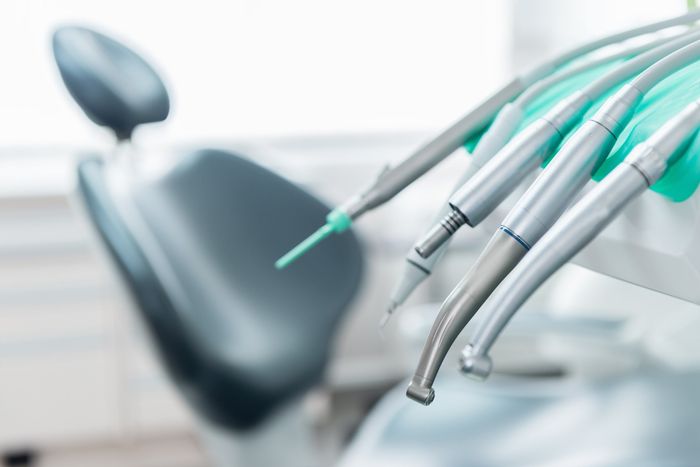
Implant Restoration
A dental implant is an ideal tooth restoration for people who are missing one or more teeth because of injury, periodontal disease, or any other reason. A dental implant is a metal post that a periodontist or oral surgeon surgically positions into the jaw. Once in place and bone surrounding the implant has had time to heal, a replacement tooth is attached to the post. While implants are typically more expensive than other methods of tooth replacement, they provide superior benefits. Implants are stronger than natural teeth and generally last 10-20 years. They are also a more favorable approach than bridgework since they do not depend on neighboring teeth for support.
Who Can Receive Implants?
To receive implants, you need to have healthy gums and adequate bone to support the implant. You must also be committed to excellent oral hygiene and regular dental visits as these are critical to the long-term success of dental implants. People with one or more missing teeth must receive a dental implant. Moreover, someone who has a jawbone that's reached full growth can also have implant. The same goes for people with adequate bone, healthy oral tissues, and who have no conditions that affect their bone healing.
Nightguards and Athletic
Bite Guards
Custom designed mouthguards and nightguards are made of flexible plastic and molded to fit the shape of your teeth. Mouthguards are recommended to protect the jaw and teeth during physical activity and sports such as boxing, football, basketball, or other activities where your mouth may get hit. In addition, these guards protect the soft tissues of your tongue, lips, and cheek lining. Nightguards are also recommended for patients who clench or grind their teeth at night to protect their teeth and bite.
If you have decided a guard is right for you, the dentist will take an impression of your teeth which will then be sent to a lab to make a custom fit guard for you. In most cases you can choose from a variety of colors and styles for your guard. On average, guards last between 3 and 10 years.
Root canal
Root canal treatment (also referred to as root canal therapy or endodontic therapy) is made necessary when a cavity is allowed, through neglect, to reach all the way to the pulp. (Regular cleanings and check-ups prevent and detect problems early) Sometimes deep restorations or trauma to a tooth may cause the nerve to be damaged to the point it needs root canal therapy, also. Once this occurs the pulp becomes infected and can even extend through the root tip and begin to eat away at the surrounding bone (this is an abscess). By the time the pulp is infected it must be treated and cannot heal on its own. It can even weaken the entire immune system. This is dangerous, not to mention very painful. Symptoms that the pulp has become infected may include sensitivity to hot/cold or sweets, pain, swelling, pain to biting or pressure, and a bad taste in the mouth.
Sometimes, however, no symptoms are apparent, and the person is unaware of any problem until a check-up. A root canal is then performed to clean out the infected tooth pulp and disinfect the canals of the tooth. The only other treatment would be to extract the tooth. Once the infection is resolved, the canal(s) are filled in to prevent any further infection. Usually, a core build-up and crown is recommended for restoring a tooth that has had root canal therapy.
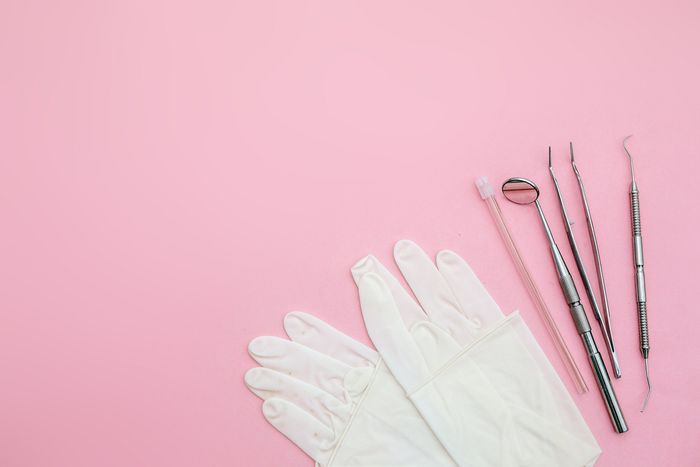
Oral hygiene
Maintaining good oral hygiene is one of the most important things you can do for your teeth and gums. Healthy teeth not only enable you to look and feel good, but they also make it possible to eat and speak properly. Good oral health is important to your overall well-being.
Daily preventive care, including proper brushing and flossing, will help stop problems before they develop.
In between regular visits to the dentist, there are simple steps that each of us can take to greatly decrease the risk of developing tooth decay, gum disease and other dental problems. These include:
- Brush thoroughly twice a day and floss daily
- Eat a balanced diet and limit snacks between meals
- Use dental products that contain fluoride, including toothpaste
- Rinse with a fluoride mouth rinse if your dentist advises you to
- Make sure that your children under 12 drink fluoridated water or take a fluoride supplement if they live in a non-fluoridated area
Wisdom teeth
Wisdom teeth are the last molars or "third molars", that develop on each side of the jaws. Wisdom teeth usually emerge in the back of the mouth between the ages of 16-20. Wisdom teeth are an asset to the mouth when they are healthy and properly positioned. Often, however, problems develop that require their removal. When the jaw isn't large enough to accommodate wisdom teeth, they can become impacted (unable to come in or misaligned). Wisdom teeth may grow sideways, emerge only partway through the gum or remain trapped beneath the gum and bone.
Crowns and bridges
Crowns and bridges are used to restore and enhance teeth that are damaged, or to take the place of missing teeth. A crown, also referred to as a cap, is used to entirely cover a damaged tooth. A crown not only strengthens a tooth, but it can dramatically improve a tooth's appearance, shape, and alignment.
Crowns may be used to:
- Replace a large filling when there is little tooth structure remaining
- Protect a weak tooth from fracturing
- Restore a fractured tooth
- Attach a bridge
- Cover a dental implant
- Cover a discolored or poorly shaped tooth
- Cover a tooth that has had root canal treatment
A bridge is an ideal method to fill the space created by missing teeth. A bridge is one or more artificial teeth that are cemented into place using the teeth on either side for support, hence the name. This is an option for filling the space created by a missing tooth. A bridge replaces the missing tooth, both functionally and cosmetically. Bridge work is as much an art as it is an exact science. The materials used may be gold alloys, porcelain bonded to metal alloy, or all ceramic material made to match your natural tooth color. The choice of material depends on requirements for strength, wear, and/or aesthetics.
Veneers
Veneers are a dental procedure in which a covering is placed over the outside (visible area) of the tooth. Veneers are usually done only to the part of the tooth that is visible when talking or smiling. The procedure can be direct or indirect. The direct technique usually involves placing composite resin on the outside of the tooth using bonding. This method is usually referred to as bonding. The indirect technique usually involves two appointments because the veneers will be fabricated at a dental laboratory.
At the first appointment the teeth are prepared, impressions taken, and the teeth are given a temporary covering. In two to three weeks the veneers are back from the laboratory, the temporaries are removed, and the veneers are bonded to the teeth. The laboratory fabricated veneers are usually made using porcelain or pressed ceramic and are very aesthetic.
The advantage of veneers versus crowns is that much less tooth material is removed, and the procedure is generally less uncomfortable. Veneers are recommended for teeth that have large fillings or little tooth structure.
Whitening
Tooth whitening is a popular procedure to make teeth whiter and brighter, and therefore more attractive. Bleaching can be used to whitening stained and discolored teeth, or simply to enhance a dull smile. Either way, tooth whitening is a safe and relatively painless procedure ideal for most patients. Our office offers two methods of whitening: in-office whitening and tray whitening.
In-office whitening is an ideal procedure for anyone wanting immediate results. Because the entire procedure takes place in our office in about an hour, it is the perfect choice for busy individuals. In this process, a protective gel is applied to your gums to protect the soft tissue. A special light-activated gel is then applied to your teeth and a special light or laser is used to enhance the action of the agent. Finally, we take impressions of your teeth to create custom trays for at home touch-up and give you instructions for keeping your smile bright. The result is dramatically whiter teeth that will last for years.
Tray whitening is a less expensive whitening treatment you can use while in the comfort of your own home to gradually whiten teeth. We will first take an impression of your teeth to create a customized clear tray that you will wear to whitening your teeth. Within a few days your trays will be ready to be picked up and we will show you how to apply the special bleaching material to the trays. The whitening gel trays should be worn 30-60 minutes up to twice a day. At the end of this period, you will see maximum whitening results that are nothing short of dazzling. Occasional treatment can be used at your convenience to maintain your new smile.
Wisdom Teeth Extraction
A wisdom tooth extraction is a relatively routine procedure. The dentist will numb the area in your mouth with local anaesthesia or use IV sedation, so you are asleep during the procedure. After the tooth (or teeth) is removed, you may be asked to bite down softly on a piece of gauze for 30 to 45 minutes after you leave the office, to limit any bleeding that may occur. Some pain and swelling may occur, but it will normally go away after a few days; however, you should call your dentist if you have prolonged or severe pain, swelling, bleeding or fever.
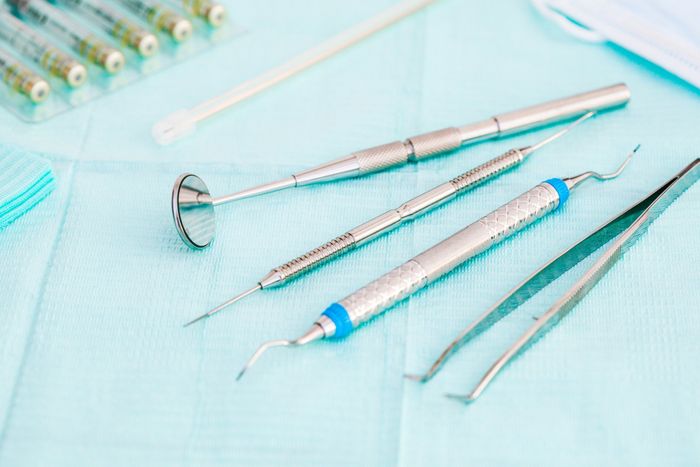
X-rays
X-rays are a focused beam of x-ray particles passed through bone which produce an image on special film, showing the structure through which, it passed. This provides the familiar black and white images doctors and dentists use to diagnose problems and disease. Without an x-ray of the whole tooth and supporting bone and gum tissues, there would be no way to detect infection or pathology that requires attention.
Digital X-Rays
In our office we use digital radiography which allows us to take x-rays using up to 90% less radiation than conventional film x-rays. Using this technology, we are able to take an x-ray of your mouth by using a small sensor which records the image of your teeth and sends it to a computer.
The result is a highly detailed image of your mouth that can easily be enhanced to better diagnosis dental concerns and determine the very best treatment for each case.
Paperless charting
Our office is a completely digital (paperless) dental office. This means all x-rays and charting are made and recorded with the aid of the computer. This technology allows us to maintain your dental records electronically and cuts down the unnecessary paperwork used with traditional paper charting. Traditional paper charting is difficult to keep standardized from doctor to hygienist to assistant. Even handwriting differences and coding make the charts look different. The computer eliminates this problem by using consistent charting methods that are accurate and precise, making it easy to read your dental chart and see up-to-date information. Digital charting standardizes the charting process, so it is clear, easy to understand, and enables us to provide the most accurate and precise care to our patients. When needed, this method also allows us to share information quickly and securely with your other healthcare providers.
Intraoral camera
We use small cameras about the size of a pen, called intraoral cameras, to help clearly see the condition of your teeth and gums. With this advanced technology our dentists can zoom in on small diseased areas, cracks, chips and worn metal fillings with extreme precision. The full-color images taken with the intraoral camera are sent to a computer screen so we can clearly see and diagnose dental problems much earlier than with traditional dental technology. Because images are displayed on our screens, patients will also be able to see areas being worked on and are able to gain a better understanding of the dental treatments being performed.
Digital imaging
We use digital imaging software in our office, which allows us to take a digital picture of you and use our imaging system to predict how a particular treatment or cosmetic procedure would change the appearance of your teeth. This software is beneficial for patients who are considering cosmetic procedures but are not sure if they're ready for dramatic changes. Digital imaging also allows us to document your dental case and procedures very well. We take digital images of your face, teeth, and smile to provide us with a permanent dental record and to provide visual documentation of the dental treatments performed.
Wisdom teeth
Wisdom teeth are the last molars or "third molars", that develop on each side of the jaws. Wisdom teeth usually emerge in the back of the mouth between the ages of 16-20. Wisdom teeth are an asset to the mouth when they are healthy and properly positioned. Often, however, problems develop that require their removal. When the jaw isn't large enough to accommodate wisdom teeth, they can become impacted (unable to come in or misaligned). Wisdom teeth may grow sideways, emerge only partway through the gum or remain trapped beneath the gum and bone.
Learn more about our services by calling us today!
Phone:
Dental Clinic of Onalaska - (608) 783-3341 | Trempealeau Dental - (608) 534-6195
Fax #- (608) 783-4309
Email:






- Mon - Fri
- -
- Sat - Sun
- Closed
